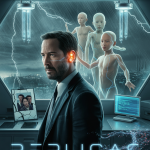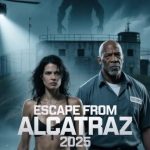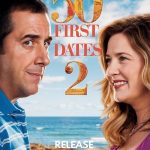Top 50 Doomsday & Apocalypse Movies to Watch
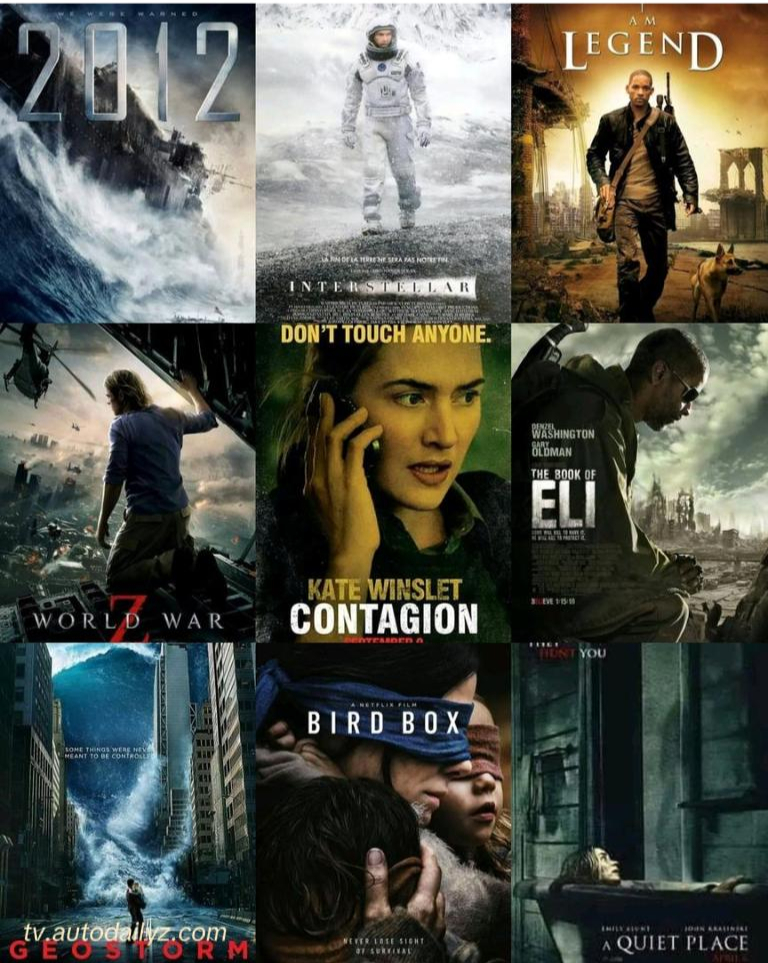
Nuclear War / Global Catastrophe
1. Threads (1984)
Threads is a 1984 British-Australian apocalyptic war drama television film directed by Mick Jackson and written by Barry Hines. Produced by the BBC in collaboration with Australia’s Nine Network and Western-World Television Inc., the film presents a harrowing depiction of the effects of nuclear war on the city of Sheffield, England. It follows the lives of two families, the Kemps and the Becketts, as they navigate the escalating tensions between the United States and the Soviet Union, culminating in a catastrophic nuclear exchange. The narrative spans over a decade, illustrating the immediate devastation and the long-term societal collapse resulting from the conflict.
Upon its release, Threads was lauded for its unflinching realism and received critical acclaim, winning four BAFTA Awards, including Best Single Drama. Its stark portrayal of nuclear fallout and its aftermath left a lasting impact on audiences and has been cited as one of the most realistic and disturbing depictions of nuclear war ever produced.

2. The Day After (1983)
The Day After is a 1983 American made-for-television apocalyptic war drama directed by Nicholas Meyer and written by Edward Hume. The film depicts a fictional nuclear exchange between NATO and the Warsaw Pact, focusing on the residents of Lawrence, Kansas, and Kansas City, Missouri, as they experience the escalating tensions and the devastating aftermath of nuclear war. The narrative follows several families and individuals as they navigate the horrors of nuclear fallout and societal collapse.
Upon its release on November 20, 1983, on the ABC television network, The Day After garnered an estimated audience of over 100 million viewers, making it one of the most-watched television films in U.S. history. The film’s stark portrayal of nuclear war’s consequences sparked widespread public discourse and reportedly influenced U.S. President Ronald Reagan’s views on nuclear policy, contributing to subsequent arms control negotiations.
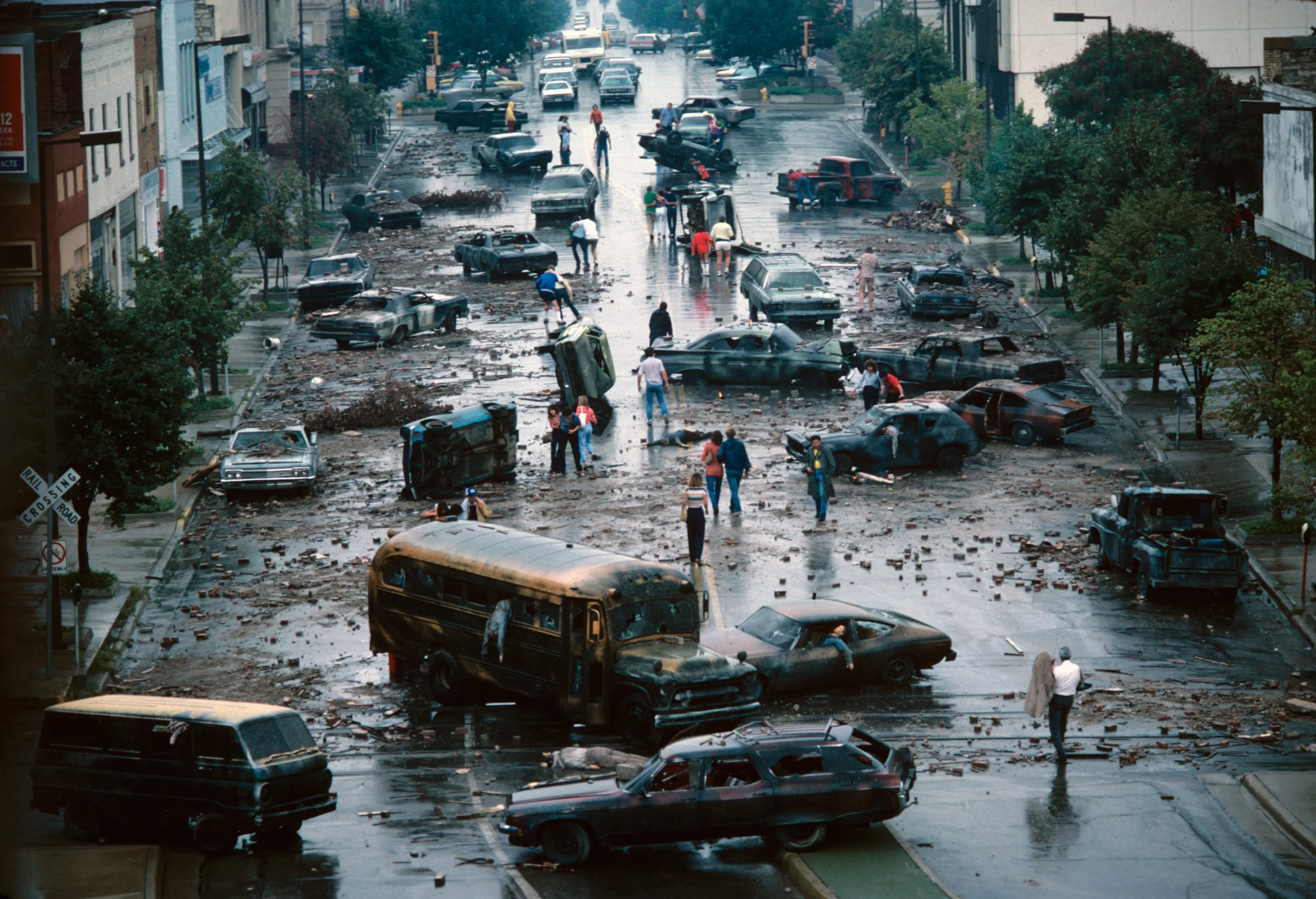
3. Testament (1983)
Testament is a 1983 American post-apocalyptic drama directed by Lynne Littman and written by John Sacret Young, adapted from Carol Amen’s short story “The Last Testament.” The film portrays the harrowing aftermath of a nuclear attack on a suburban family in the fictional town of Hamelin, California. Unlike other nuclear-themed films of its time, Testament focuses intimately on the personal and emotional toll of such a catastrophe, eschewing large-scale special effects for a more grounded narrative.
The Wetherly family—parents Carol and Tom, and their children Brad, Mary Liz, and Scottie—lead a typical suburban life until a sudden nuclear attack devastates the nation. With communication lines severed and Tom missing, Carol must navigate the challenges of survival, radiation sickness, and the gradual disintegration of their community. The film chronicles their struggle to maintain hope and humanity in the face of overwhelming despair.
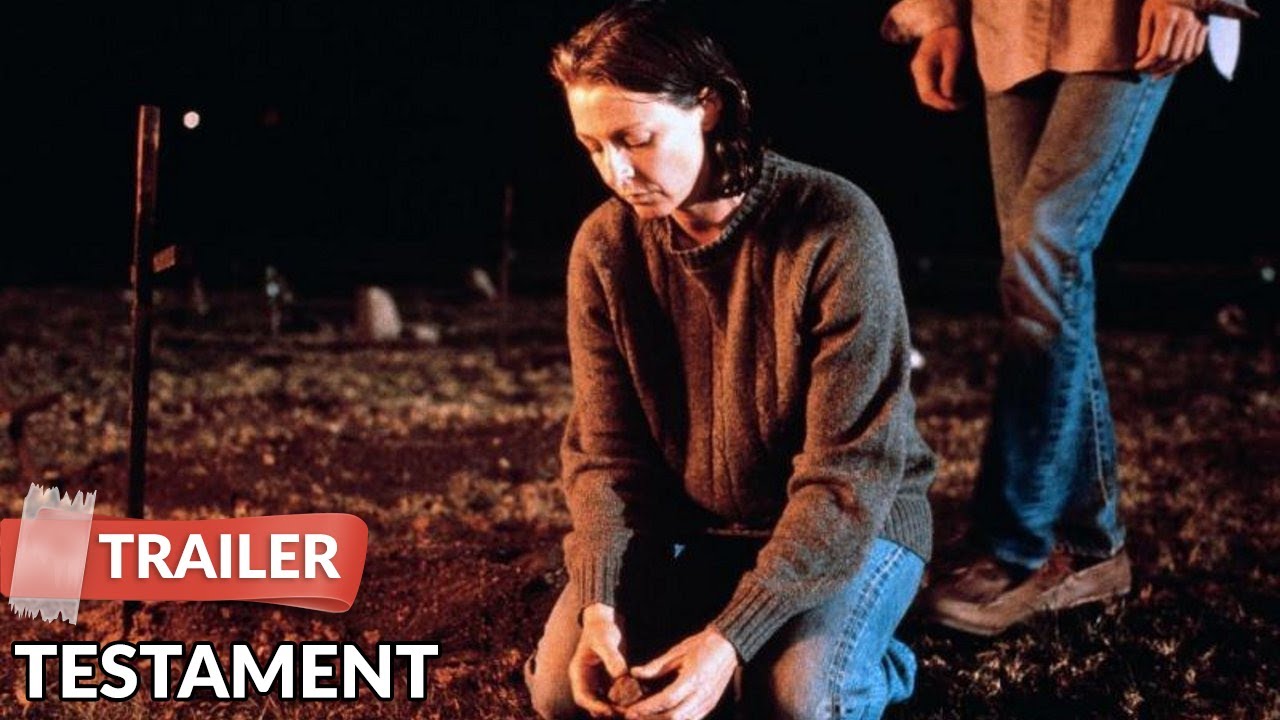
4. On the Beach (1959)
On the Beach is a 1959 American post-apocalyptic science fiction drama directed by Stanley Kramer, based on the novel of the same name by Nevil Shute. Set in a grim near-future after a catastrophic nuclear war has destroyed most of the Northern Hemisphere, the story follows the last surviving citizens in Australia as they await the inevitable spread of deadly radiation. With humanity’s end looming, the characters grapple with existential questions, lingering hopes, and the search for personal meaning amid despair.
The film features a powerful ensemble cast led by Gregory Peck as U.S. Navy Commander Dwight Towers, Ava Gardner as the spirited Moira Davidson, Fred Astaire in a rare dramatic role as scientist Julian Osborne, and Anthony Perkins as Australian naval officer Peter Holmes. Their intertwined stories unfold against a backdrop of loss, denial, and fleeting romance as they come to terms with the approaching end.
Filmed largely on location in Melbourne, On the Beach brought a stark and haunting vision of nuclear apocalypse to the silver screen, underscored by its restrained tone and somber atmosphere. Unlike many other depictions of global catastrophe, the movie focuses not on destruction but on the slow, inevitable fade of civilization, making it one of the most poignant anti-war statements of its era.
Upon its release, On the Beach was both critically acclaimed and controversial, sparking debates about nuclear weapons and human survival. Its sober treatment of the end of the world continues to resonate decades later as a stark warning about the cost of global conflict.
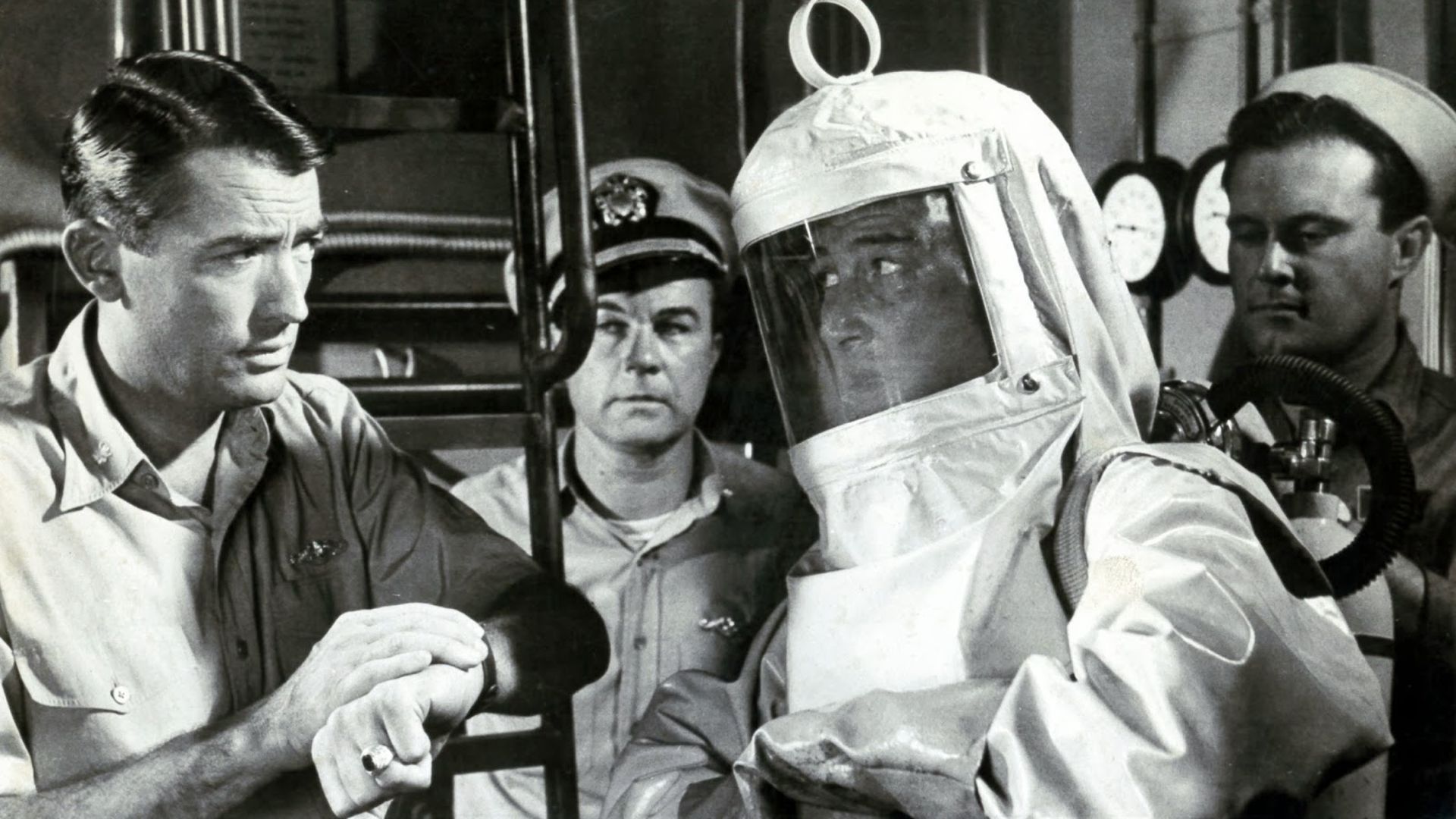
5. Dr. Strangelove (1964)
Dr. Strangelove is a landmark 1964 satirical black comedy directed, produced, and co-written by Stanley Kubrick, adapted from the novel Red Alert by Peter George. The film masterfully blends absurd humor with grim subject matter, delivering a biting critique of Cold War politics, nuclear arms races, and the precariousness of human error in military command structures.
Set during a time of escalating tensions between the United States and the Soviet Union, the story kicks off when an insane U.S. Air Force general, Jack D. Ripper, unilaterally launches a nuclear attack on the Soviet Union. As the U.S. President and his advisors—including the eccentric former Nazi scientist Dr. Strangelove—scramble to avert global catastrophe, the film exposes the madness underlying supposedly rational systems of war and deterrence.
Peter Sellers gives an iconic, triple-role performance as Group Captain Lionel Mandrake, President Merkin Muffley, and Dr. Strangelove himself, demonstrating his incredible range and comic genius. George C. Scott, Sterling Hayden, and Slim Pickens round out a stellar supporting cast, with Pickens famously riding a nuclear bomb to one of cinema’s most memorable endings.
Kubrick’s razor-sharp direction, combined with a meticulously constructed script and a stark black-and-white aesthetic, cements Dr. Strangelove as one of the greatest and most influential films in American cinema. It remains a timeless and chillingly relevant satire on humanity’s self-destructive instincts.
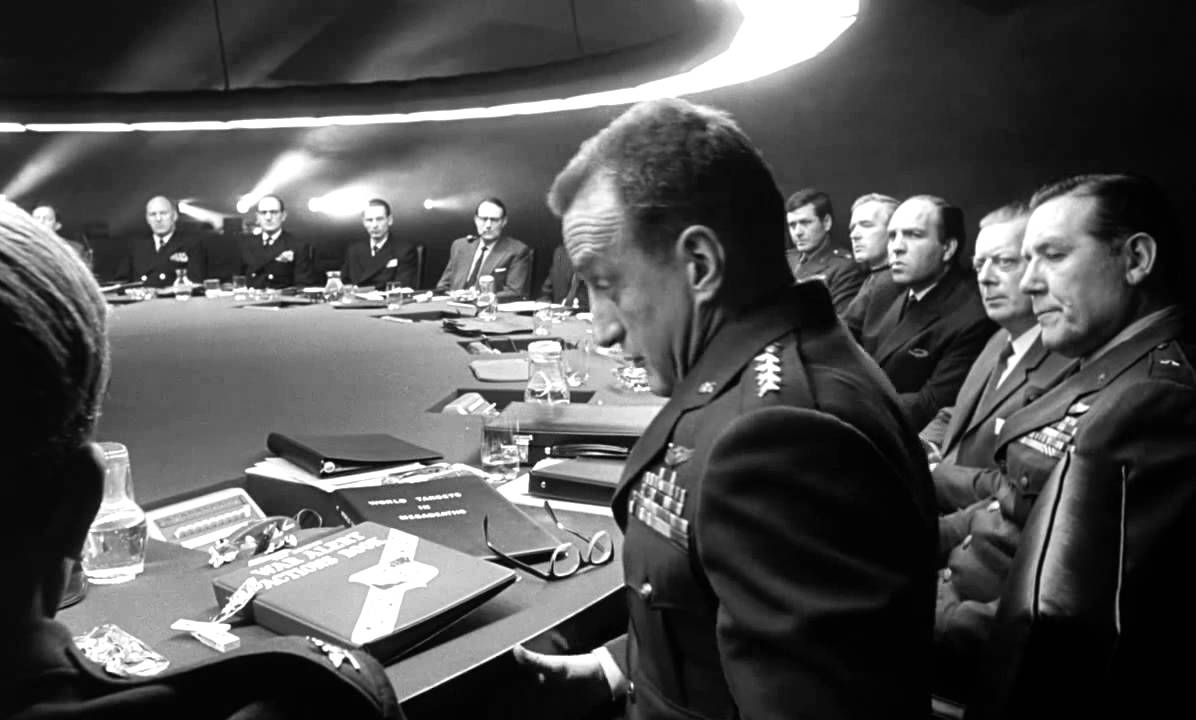
6. The Road (2009)
The Road is a haunting 2009 post-apocalyptic drama directed by John Hillcoat, based on the Pulitzer Prize-winning novel by Cormac McCarthy. Set in a bleak and dying world after an unspecified cataclysm, the film follows a father and his young son as they journey across a desolate, ash-covered America, struggling to survive while clinging to their humanity.
Viggo Mortensen delivers a raw, heartbreaking performance as the unnamed father, portraying a man worn down by grief, hunger, and fear, but fiercely protective of his son (played by Kodi Smit-McPhee). As they move through devastated towns and dangerous landscapes, encountering both desperate survivors and ruthless marauders, the bond between father and son becomes their only anchor in an otherwise hopeless world.
With stark cinematography that captures the film’s cold, colorless setting, The Road emphasizes atmosphere over spectacle, focusing on the emotional and moral challenges of survival. Nick Cave and Warren Ellis composed the haunting score, perfectly complementing the film’s melancholic tone.
A meditation on love, endurance, and the loss of civilization, The Road received critical acclaim for its faithful adaptation of McCarthy’s grim vision and its powerful performances. It stands as one of the most emotionally resonant post-apocalyptic films ever made.

7. The Divide (2011)
The Divide is a 2011 psychological horror thriller directed by Xavier Gens, known for its intense portrayal of human nature when pushed to the edge. Set in the aftermath of a nuclear attack on New York City, the story follows a group of nine survivors who take refuge in the basement of their apartment building. What begins as a desperate bid for survival soon descends into a nightmarish collapse of morality and sanity.
As food supplies dwindle and tensions rise, fear and paranoia tear the group apart. Relationships fracture, violence erupts, and the survivors devolve into primal versions of themselves. The claustrophobic setting intensifies the characters’ psychological deterioration, making The Divide a chilling study of how quickly civilization can crumble in isolation.
The film stars Lauren German, Michael Biehn, Milo Ventimiglia, and Rosanna Arquette, each delivering raw, visceral performances that underline the brutal and unsettling atmosphere. With graphic violence, emotional trauma, and stark imagery, The Divide is an unflinching look at humanity’s darkest instincts.
Praised for its bleak realism and uncompromising storytelling, the film has gained a cult following among fans of post-apocalyptic and psychological horror, standing as a brutal meditation on survival, control, and the loss of humanity.

8. Right at Your Door (2006)
Right at Your Door is a 2006 independent apocalyptic thriller written and directed by Chris Gorak. Set in Los Angeles, the film captures the immediate aftermath of a series of dirty bomb attacks that release chemical contaminants into the air, throwing the city into chaos.
The story follows Brad (Rory Cochrane), an unemployed musician, who finds himself alone at home when the explosions occur. His wife, Lexi (Mary McCormack), was downtown at the time of the attacks. As Brad frantically tries to reach her, official broadcasts instruct residents to seal their homes and stay inside to avoid exposure to the toxic fallout. When Lexi finally returns home, Brad is faced with an impossible moral dilemma: let her inside and risk exposure—or keep the house sealed and protect himself.
Filmed with a gritty, intimate style, Right at Your Door emphasizes fear, isolation, and distrust in a disaster scenario. The film builds tension through claustrophobic settings and a deep sense of dread, focusing less on spectacle and more on emotional and psychological fallout. Its bleak and thought-provoking ending leaves audiences grappling with questions about love, survival, and government authority during a crisis.
Critically praised for its gripping atmosphere and powerful performances, Right at Your Door offers a stark and realistic portrayal of urban disaster survival, and remains a hidden gem in the apocalyptic thriller genre.
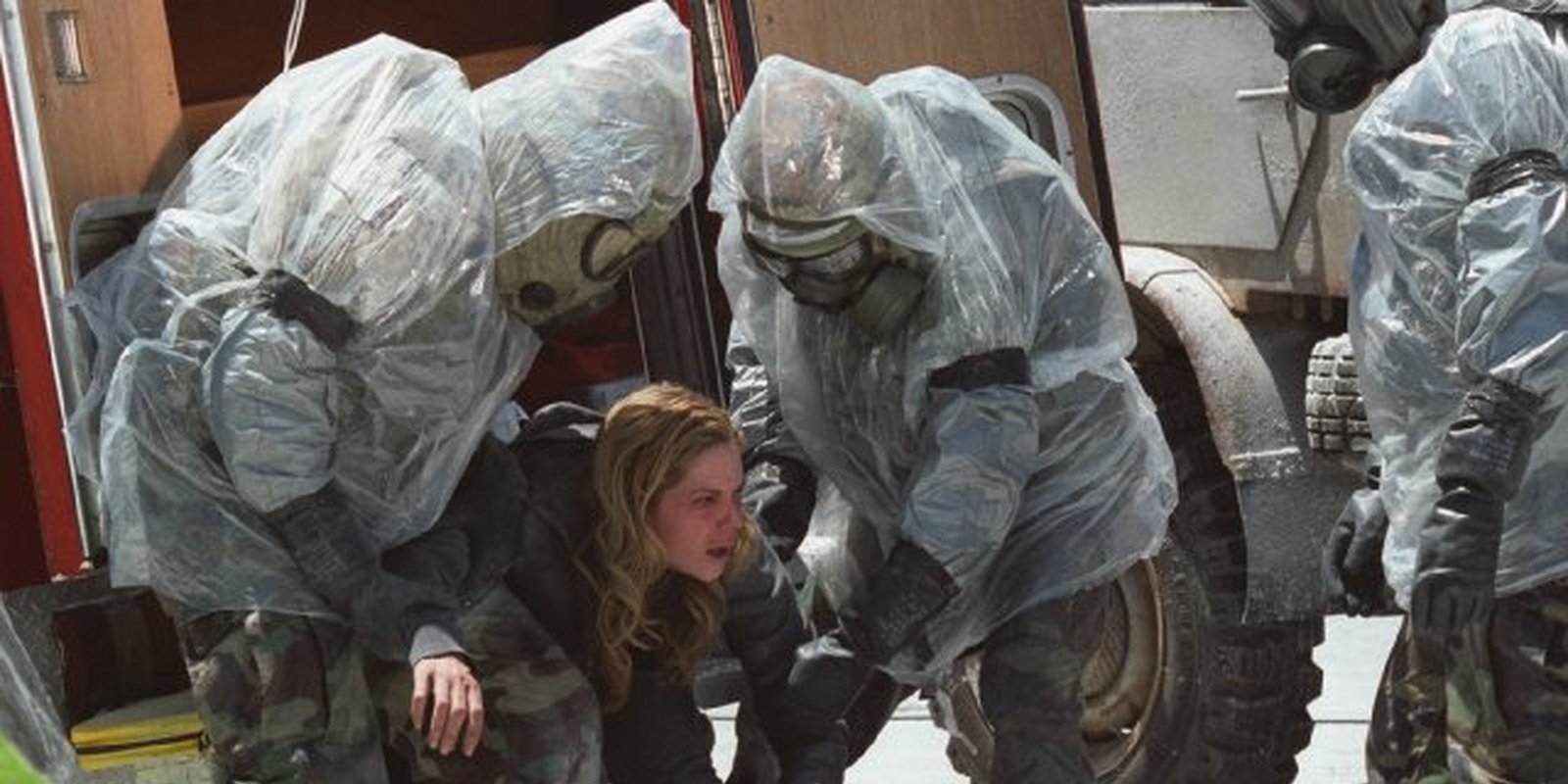
9. The Book of Eli (2010)
The Book of Eli is a 2010 post-apocalyptic action drama directed by the Hughes Brothers, featuring a commanding performance by Denzel Washington. Set in a desolate, ravaged America thirty years after a catastrophic war, the film follows Eli, a lone wanderer on a mission to deliver a mysterious, sacred book to a safe location in the West.
Armed with extraordinary survival skills and unwavering faith, Eli moves through a barren landscape filled with desperate survivors, violent scavengers, and crumbling towns. Along the way, he crosses paths with Carnegie (Gary Oldman), a ruthless warlord who seeks the book for its power to control the remaining population. Mila Kunis co-stars as Solara, a young woman drawn to Eli’s quest, who gradually finds the courage to seek a better life beyond oppression.
Visually striking with its bleak, washed-out color palette and gritty atmosphere, The Book of Eli is both a brutal action film and a profound exploration of faith, morality, and hope in a seemingly hopeless world. Denzel Washington, who performed many of his own stunts, brings stoic intensity and grace to his role, while the film’s narrative offers a unique twist that redefines the journey and its meaning.
Critically noted for its compelling storytelling, powerful performances, and philosophical undertones, The Book of Eli stands out as a memorable entry in the post-apocalyptic genre.

10. Into the Forest (2015)
Into the Forest is a 2015 post-apocalyptic drama directed by Patricia Rozema, adapted from Jean Hegland’s novel of the same name. Set in a near-future where society collapses due to a continent-wide power outage, the story focuses on two sisters, Nell (Elliot Page) and Eva (Evan Rachel Wood), who live in an isolated house deep within the forest.
As the outside world crumbles and supplies dwindle, the sisters must rely on their wits, survival skills, and each other to endure the harsh realities of a world without technology, communication, or government support. Their bond is tested as they face not only the daily struggle for food and safety but also personal loss, isolation, and the dangers that emerge from desperate human encounters.
Visually haunting and deeply emotional, Into the Forest is more than just a survival story—it’s an intimate exploration of resilience, family, and adaptation in the face of overwhelming adversity. The film strips away the traditional spectacle of apocalyptic cinema, offering instead a grounded, character-driven narrative that highlights human vulnerability and strength.
Praised for the powerful performances by Page and Wood and its beautiful cinematography, Into the Forest stands as a poignant and thought-provoking entry in the survival drama genre.
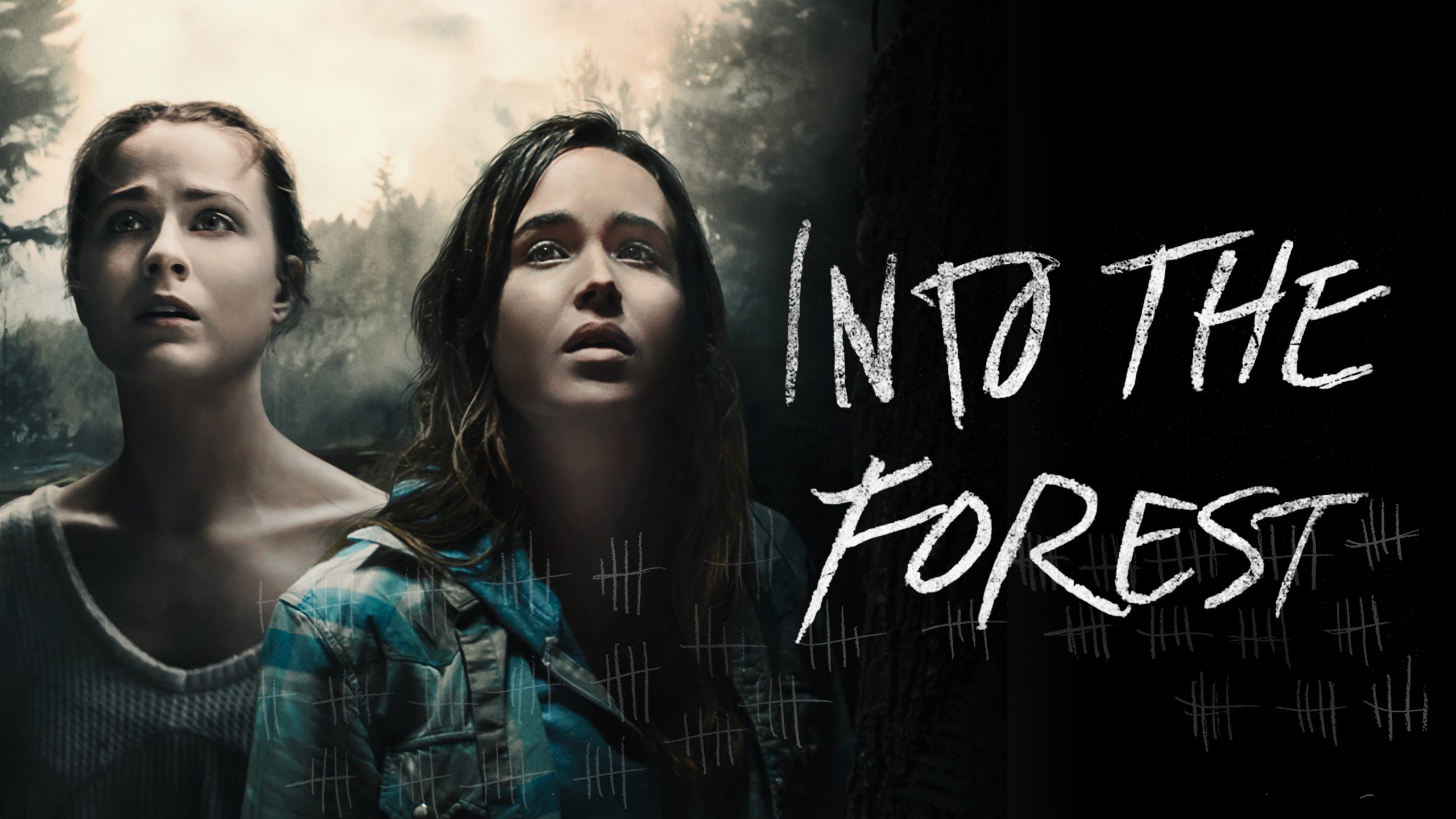
Natural Disasters / Climate Collapse
11. The Day After Tomorrow (2004)
12. 2012 (2009)
13. Greenland (2020)
14. Deep Impact (1998)
15. Armageddon (1998)
16. Geostorm (2017)
17. Volcano (1997)
18. Dante’s Peak (1997)
19. San Andreas (2015)
20. Don’t Look Up (2021)
Zombie / Infection Apocalypse
21. 28 Days Later (2002)
22. 28 Weeks Later (2007)
23. World War Z (2013)
24. Train to Busan (2016)
25. I Am Legend (2007)
26. Dawn of the Dead (2004)
27. Resident Evil (2002)
28. REC (2007)
29. Carriers (2009)
30. Cargo (2017)
Alien Invasion / Sci-Fi Doomsday
31. War of the Worlds (2005)
32. Independence Day (1996)
33. Cloverfield (2008)
34. Edge of Tomorrow (2014)
35. The Quiet Place (2018)
36. 10 Cloverfield Lane (2016)
37. The Mist (2007)
38. Knowing (2009)
39. Oblivion (2013)
40. Love and Monsters (2020)
Philosophical / Psychological End-of-World Films
41. Children of Men (2006)
42. Melancholia (2011)
43. These Final Hours (2013)
44. Seeking a Friend for the End of the World (2012)
45. It’s a Disaster (2012)
46. Last Night (1998)
47. Perfect Sense (2011)
48. The Road Warrior / Mad Max 2 (1981)
49. Mad Max: Fury Road (2015)
50. Coherence (2013)

